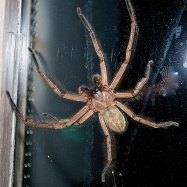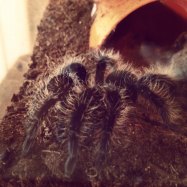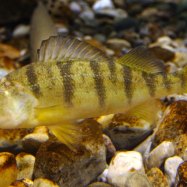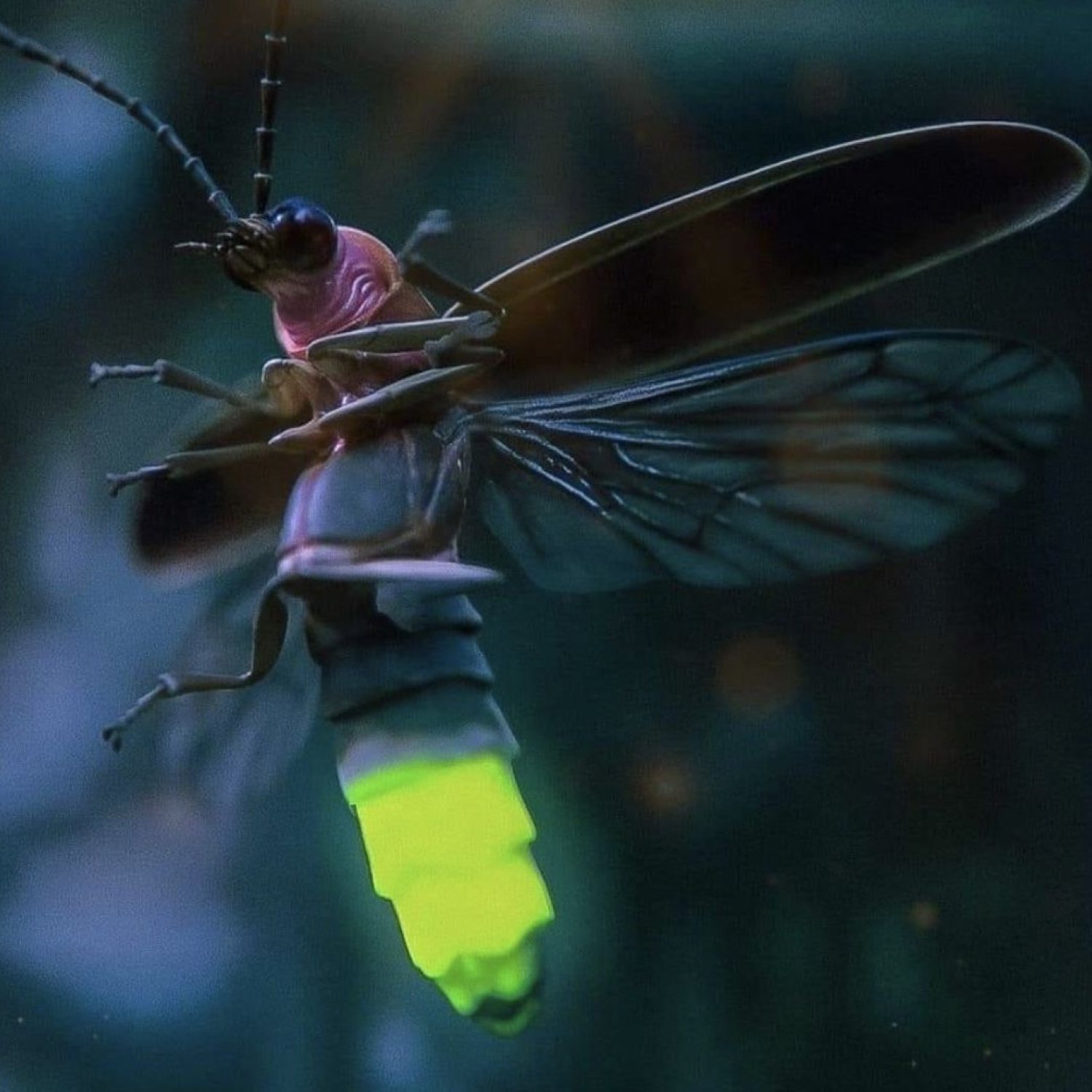
Firefly
5-25 millimeters (depending on species)
The firefly, also known as lightning bug, is a tiny but enchanting creature found in various locations. With its small and elongated body, it can grow up to 5-25 millimeters, depending on the species. Part of the Lampyridae family, these bioluminescent insects light up the night with their mesmerizing glow. Catch a glimpse of these magical creatures in your own backyard! #firefly #lightningbug #lampyridae #bioluminescence
Animal Details Summary:
Common Name: Firefly
Kingdom: Animalia
Habitat: Grasslands, forests, marshes
The Enchanting World of Fireflies: Lighting Up the Night
As the sun sets and darkness falls, a magical phenomenon takes place in various regions across the world. Tiny creatures emerge from the shadows, lighting up the night with their glowing bodies. These are the fireflies, scientifically known as Lampyridae, and they are as fascinating as they are elusive.Fireflies are unique insects that belong to the order Coleoptera, making them one of the largest groups of beetles in the animal kingdom Firefly. Their name is derived from the Old English word "glow-fly" which perfectly describes their most remarkable characteristic - the ability to produce light. But there is so much more to these enchanting creatures than meets the eye.
A Brief Introduction to Fireflies
Fireflies are found globally, with over 2,000 species spread across grasslands, forests, and marshes. They are commonly found in temperate and tropical regions, but some species have also been spotted in Arctic and Antarctic regions. While some species of fireflies are wingless, most have two pairs of wings and can fly, making them agile and swift hunters in the night.The most striking feature of fireflies is their bioluminescence, which is the process of producing and emitting light. This is a result of a chemical reaction within their bodies that involves the enzyme luciferase and the molecule luciferin. The light produced by fireflies is often yellowish-green in color, but some species have been observed producing red, orange, and even blue light.
The Life Cycle of a Firefly
Like most insects, fireflies undergo metamorphosis, meaning they go through various stages of development before becoming adults Fisher. Their life cycle typically consists of four stages - egg, larva, pupa, and adult.Fireflies lay their eggs in damp soil or on plants, where they hatch into larvae. These larvae, also known as glow worms, have elongated bodies with well-defined segments and are known for their glowing appearance. They feed on small insects and snails, using their sharp mandibles to inject a paralyzing enzyme into their prey. This makes them carnivorous and excellent predators in their habitats.
After months of feeding and growing, the larvae enter the pupa stage, where they undergo rapid changes and develop their adult form. The pupa of a firefly is often enclosed in a cocoon and is relatively inactive. Finally, as adults, fireflies emerge from their cocoons, and the males start their mesmerizing light displays to attract mates. The females, on the other hand, emit a different light pattern, signaling their receptivity to mating.
The Fascinating Behavior of Fireflies
Apart from their glowing abilities, fireflies also have some unique behaviors that make them even more intriguing. One of the most fascinating behaviors is called "synchronicity." This is when a large group of fireflies flash their lights in unison, creating a stunning and synchronized light show. Scientists believe that this behavior is used to attract mates or to confuse predators.Another interesting behavior of fireflies is their ability to communicate using their light signals. Each species has its unique pattern of light flashes, allowing them to identify and attract a potential mate of the same species. This communication is essential for the survival and reproduction of fireflies, as they often face competition and the risk of mating with a different species.
The Cultural Significance of Fireflies
Fireflies have long been a part of human culture and have inspired stories, myths, and legends around the world. In Japan, the firefly season is celebrated with traditional festivals and fireworks displays, while in India, fireflies are believed to hold the souls of loved ones who have passed on. In western cultures, fireflies are often associated with magic, wonder, and romance, making them a popular motif in literature and art.In recent times, fireflies have also become a subject of scientific research, particularly in the fields of medicine and technology. Scientists are exploring ways to use the enzymes of fireflies to make medical diagnostics more accessible and to create more efficient lighting sources in the form of glow sticks and LED lights.
The Future of Fireflies
Unfortunately, like many other species, fireflies are facing threats to their habitats and populations. Deforestation, light pollution, and the use of pesticides are some of the biggest challenges that fireflies are facing today. These factors not only affect their ability to reproduce and find mates, but they also disrupt their circadian rhythms, affecting their overall health.It is crucial that we take necessary measures to protect these magical creatures and their habitats. This includes preserving natural habitats, limiting the use of artificial lighting at night, and avoiding the use of harmful pesticides. By doing so, we can continue to enjoy the beautiful light shows of fireflies and preserve their place in the natural world for generations to come.
In conclusion, fireflies are mysterious creatures that continue to fascinate and capture our imagination. From their bioluminescent capabilities to their unique behaviors and cultural significance, they are truly a wonder of the animal kingdom. So, the next time you see these magical beings lighting up the night, take a moment to appreciate their beauty and the role they play in our ecosystem.

Firefly
Animal Details Firefly - Scientific Name: Lampyridae
- Category: Animals F
- Scientific Name: Lampyridae
- Common Name: Firefly
- Kingdom: Animalia
- Phylum: Arthropoda
- Class: Insecta
- Order: Coleoptera
- Family: Lampyridae
- Habitat: Grasslands, forests, marshes
- Feeding Method: Carnivorous (larvae) and nectarivorous (adults)
- Geographical Distribution: Global
- Country of Origin: N/A
- Location: Various
- Animal Coloration: Yellowish-green
- Body Shape: Small and elongated
- Length: 5-25 millimeters (depending on species)
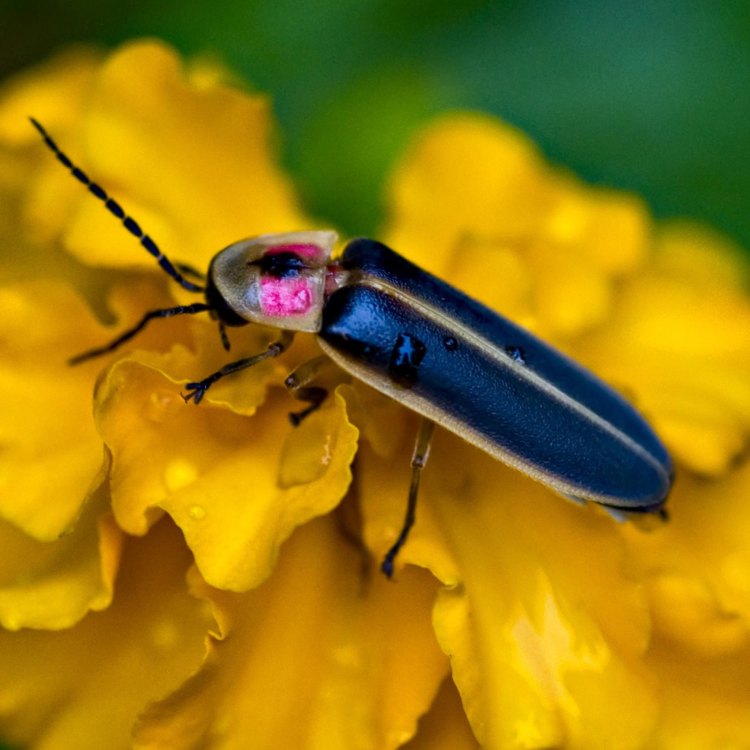
Firefly
- Adult Size: 5-25 millimeters (depending on species)
- Average Lifespan: 2-4 weeks
- Reproduction: Sexual
- Reproductive Behavior: Courtship flashing
- Sound or Call: Mating calls (flashing light patterns)
- Migration Pattern: Varies by species
- Social Groups: Individuals may gather in large groups during mating season
- Behavior: Nocturnal
- Threats: Habitat loss, pollution, light pollution
- Conservation Status: Varied (some species are threatened)
- Impact on Ecosystem: Pollination and pest control
- Human Use: Scientific research, tourism
- Distinctive Features: Bioluminescent abdomen
- Interesting Facts: Only certain species of fireflies can produce light
- Predator: Some bird species, spiders, beetles
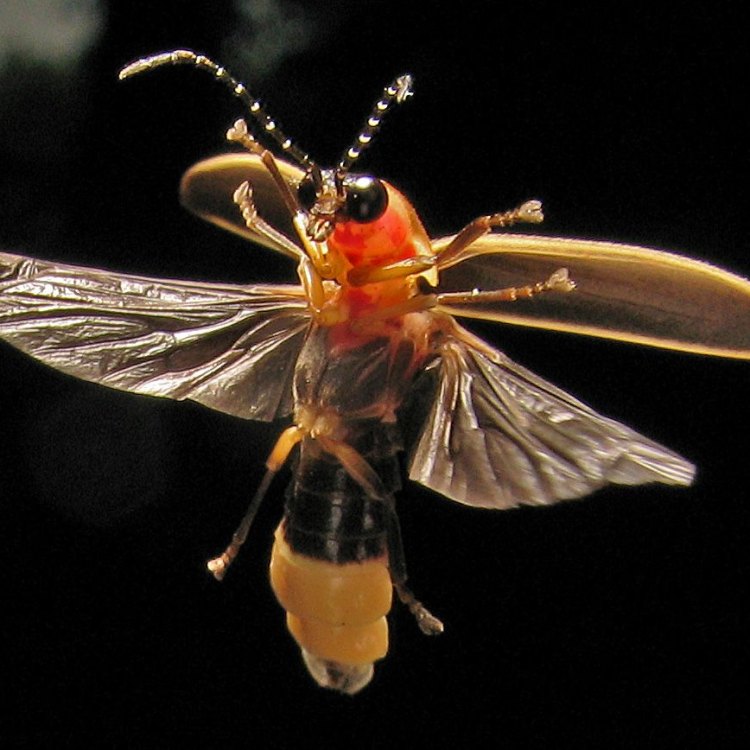
Lampyridae
The Charming Fireflies: Nature's Tiny, Shining Stars
When the sun sets and darkness falls, there is a magical transformation that occurs in some parts of the world. Tiny sparkling lights can be seen dancing in the air, creating a whimsical atmosphere almost straight out of a fairy tale. These little creatures are none other than fireflies, also known as lightning bugs in some regions. Fireflies are a type of beetle that possess a unique and fascinating feature, bioluminescence PeaceOfAnimals.Com. In this article, we will delve into the world of fireflies and explore their life, behaviors, and incredible impact on the ecosystem.Adult fireflies come in various sizes, ranging from 5 to 25 millimeters, depending on the species. Despite their small size, these insects have a big impact on the environment they inhabit. Fireflies can be found in various parts of the world, from temperate and tropical regions to more arid climates. The majority of species are found in warmer areas, particularly in Asia, and are often associated with moist environments such as marshes, meadows, and woodlands.
The average lifespan of a firefly is only 2 to 4 weeks, which means they have a short but brilliant existence. During this time, they play a crucial role in their ecosystem, offering a variety of benefits that far outweigh their brief lifespan. Fireflies are known for their reproductive behavior, courtship flashing. This unique behavior is a mating ritual where the male fireflies flash their light in a specific pattern to attract females Flamingo. Each species has their own distinct light patterns, making it easier for them to find a potential mate amidst the sea of flashing lights.
Another interesting aspect of fireflies is their ability to produce sound through their flashing light patterns. These mating calls are essential in the reproduction process as they help potential mates identify each other. The flashing lights serve as a form of communication, signaling the readiness and availability of a firefly to mate with another. This behavior also helps keep predators at bay, as they are attracted to the light and may end up consuming a firefly instead.
The migration patterns of fireflies vary by species. Some species are known to stay in one area during their whole lifespan, while others embark on long-distance journeys to find suitable breeding grounds. A few species even undergo bioluminescent migrations during their larval stage, emitting light to confuse predators and avoid being eaten.
Fireflies may spend most of their lives as solitary creatures, but during their mating season, things change. Individuals may gather in large groups, creating a mesmerizing display of flashing lights. The synchronized flashing of thousands of fireflies creates an otherworldly ambiance and is often a popular attraction for tourists in certain areas.
These fascinating creatures are mainly active at night, earning them the title of nocturnal insects. They rest during the day, hidden in vegetation or in the ground, and become active during the evening. This behavior helps them conserve energy and stay protected from predators who are more active during the day.
Unfortunately, like many other species, fireflies are facing threats to their existence. Habitat loss due to human activities such as deforestation and urbanization is a major concern for fireflies. As these insects require specific ecosystems to thrive, any loss of their natural habitat directly affects their survival. Additionally, pollution and light pollution also pose a significant threat to fireflies as it interferes with their mating patterns and disrupts their ability to communicate.
As a result, the conservation status of fireflies varies by species. Some species are classified as threatened or endangered, while others are considered stable. It is crucial to protect these tiny creatures and their habitat to ensure their continued existence and the benefits they bring to the ecosystem.
Speaking of benefits, fireflies have an important role in pollination and pest control. The flashing lights of fireflies can help pollinate plants that bloom in the evening, as they are attracted to these lights. In turn, the plants they pollinate can produce fruits or seeds, contributing to the diversity and health of the ecosystem. Similarly, fireflies also contribute to pest control, as their larvae feed on snails, slugs, and worms that are harmful to plants.
Aside from their impact on the ecosystem, fireflies also hold significance for humans. They have been used in scientific research to study bioluminescence and as bioindicators of environmental health. Fireflies are also a popular tourist attraction in some regions, with nighttime firefly watching tours offered in countries like Japan and Malaysia.
One of the most distinctive and fascinating features of fireflies is their bioluminescent abdomen. This unique trait sets them apart from other insects and has captured the curiosity of scientists and researchers for centuries. The light emitted from the abdomen is created through a chemical reaction involving luciferase, an enzyme, and luciferin, a substrate. Not all fireflies have the ability to produce light, only certain species have evolved to develop this unique adaptation.
Due to their small size and luminous bodies, fireflies attract the attention of predators. Some bird species, spiders, and other beetles are known to prey on fireflies. However, fireflies also have a few tricks up their sleeves to protect themselves from their enemies. Some species contain toxic compounds in their bodies, making them unpalatable to predators. Other species have evolved to mimic the flashing patterns of fireflies that are toxic to predators, tricking them into thinking they are also inedible.
In conclusion, although small in size, fireflies are an essential and intriguing part of our ecosystem. They possess unique and remarkable characteristics, from their bioluminescent abilities to their synchronized flashing behavior. These fascinating insects may have a short lifespan, but their impact on the environment is significant. It is crucial to protect and conserve their habitats to ensure these tiny, shining stars continue to enchant us for generations to come. So, the next time you see a firefly dancing in the dark, take a moment to appreciate their beauty and the role they play in our world.
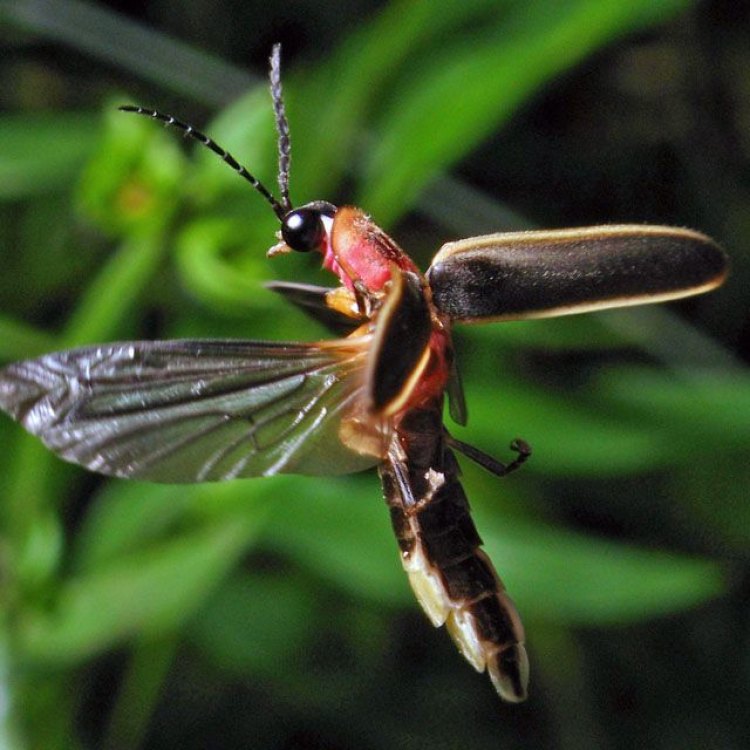
The Enchanting World of Fireflies: Lighting Up the Night
Disclaimer: The content provided is for informational purposes only. We cannot guarantee the accuracy of the information on this page 100%. All information provided here may change without prior notice.





